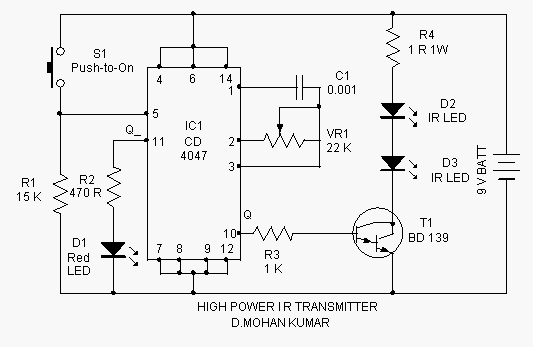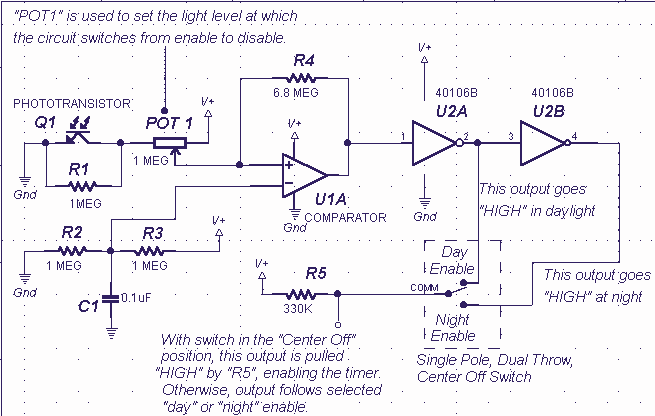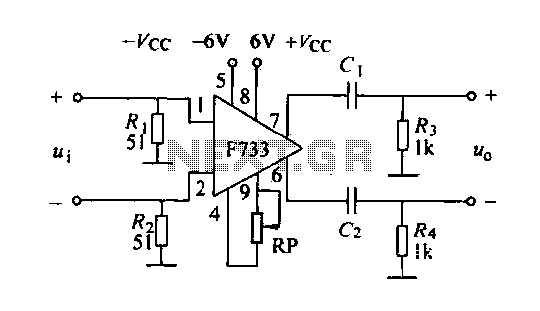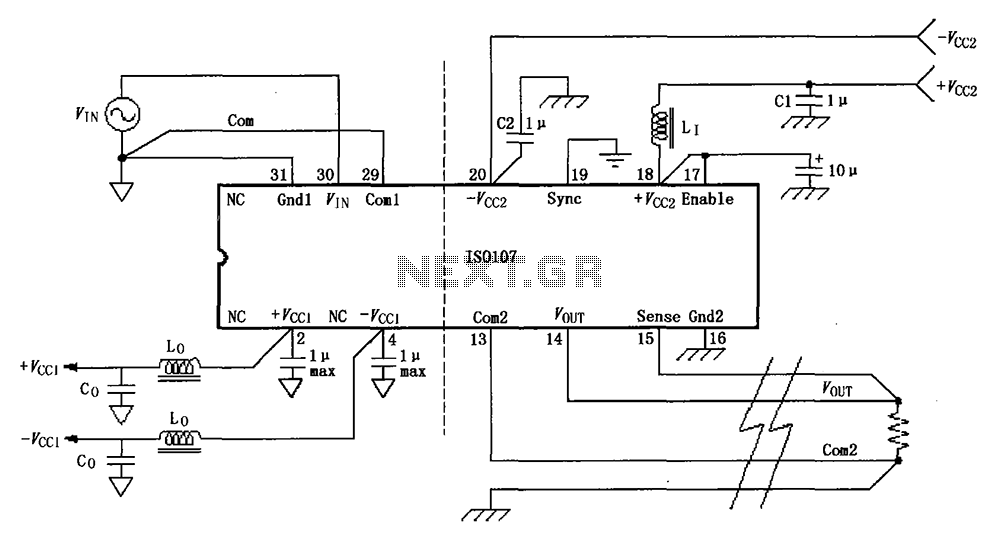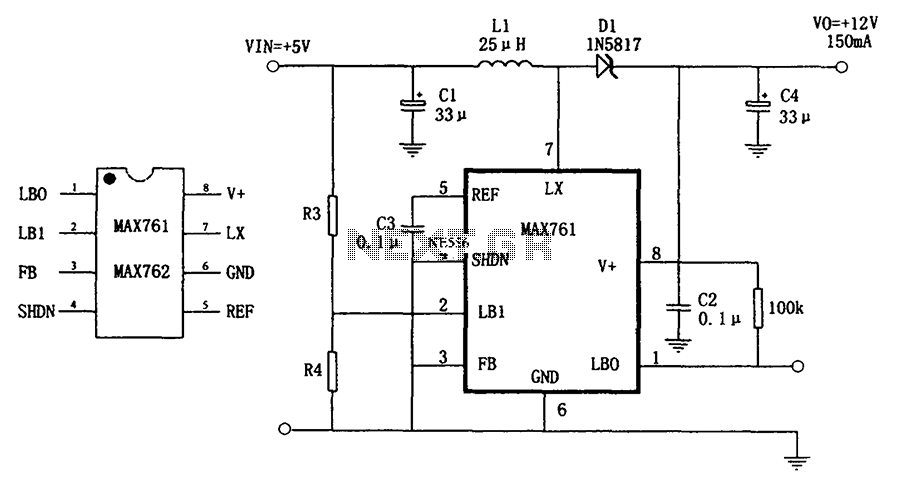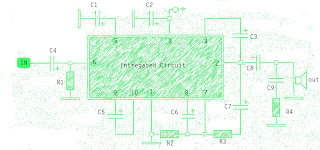
mini and simple power amplifier
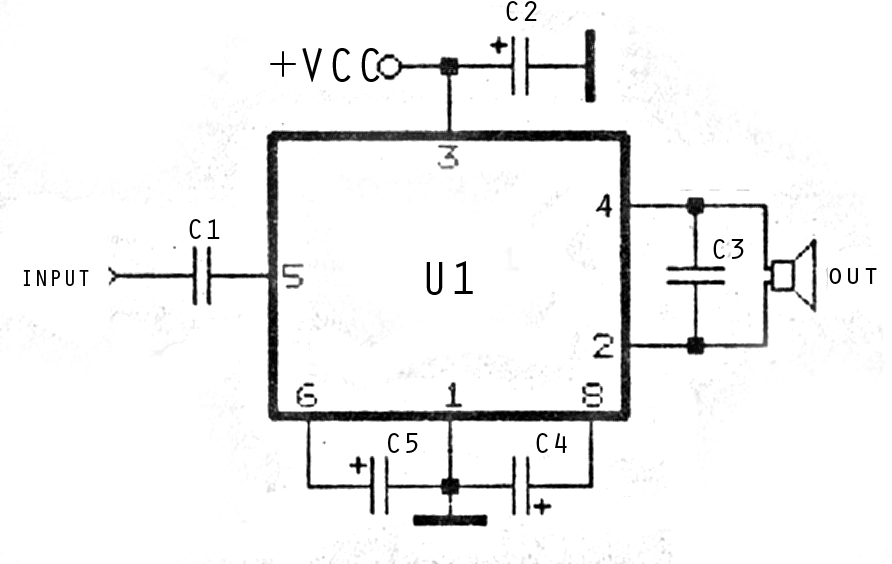
The image above depicts a miniature audio amplifier that is quite simple in design. A schematic for this audio amplifier is provided, which requires only a few components, as detailed in the accompanying diagram. This amplifier is inexpensive to construct and relatively easy to assemble. The circuit utilizes an integrated circuit (IC) as the primary amplifier, along with additional components. The IC used is the S1513, which operates with a supply voltage ranging from 1.5 volts to 6 volts and delivers an output power of 0.1 watts with a 4-ohm impedance. A list of components is available below.
The miniature audio amplifier circuit described is an efficient solution for low-power audio applications, suitable for portable devices or small audio projects. The S1513 integrated circuit serves as the core of the amplifier, providing amplification with minimal additional components, thereby simplifying the design and reducing costs.
Key specifications of the S1513 include its low supply voltage requirements, allowing it to operate effectively with battery power, making it ideal for mobile applications. The output power of 0.1 watts is sufficient for driving small speakers or headphones, producing clear audio without significant distortion.
The basic components of the circuit typically include the S1513 IC, resistors for setting gain and biasing, capacitors for coupling and decoupling, and possibly a potentiometer for volume control. A power supply circuit is also necessary to provide the required voltage range.
The schematic layout should be carefully followed to ensure proper connections and functionality. The power supply should be decoupled with capacitors to filter out noise, ensuring stable operation. Additionally, the output stage must be connected to a suitable load, respecting the specified impedance to prevent damage to the circuit.
This audio amplifier circuit exemplifies a straightforward approach to audio amplification, making it an excellent choice for hobbyists and engineers seeking to create compact audio solutions with minimal complexity.What is the meaning of the picture above The above picture is a miniature audio amplifier and very simple. Here I will give an audio amplifier schematic is very simple which only requires a few components only, can be seen under this scheme.
See from above scheme may occur to you, certainly cheap enough to make this amplifier and quite easy to ma ke. The above simple audio amplifier circuit using an IC as the main amplifier and accompanied by other components. IC used is S1513, which requires a supply voltage ranging from 1. 5 volts to 6 volts. And only 0. 1 W output power with 4 ohm impedance. For a list components can be seen below. 🔗 External reference
The miniature audio amplifier circuit described is an efficient solution for low-power audio applications, suitable for portable devices or small audio projects. The S1513 integrated circuit serves as the core of the amplifier, providing amplification with minimal additional components, thereby simplifying the design and reducing costs.
Key specifications of the S1513 include its low supply voltage requirements, allowing it to operate effectively with battery power, making it ideal for mobile applications. The output power of 0.1 watts is sufficient for driving small speakers or headphones, producing clear audio without significant distortion.
The basic components of the circuit typically include the S1513 IC, resistors for setting gain and biasing, capacitors for coupling and decoupling, and possibly a potentiometer for volume control. A power supply circuit is also necessary to provide the required voltage range.
The schematic layout should be carefully followed to ensure proper connections and functionality. The power supply should be decoupled with capacitors to filter out noise, ensuring stable operation. Additionally, the output stage must be connected to a suitable load, respecting the specified impedance to prevent damage to the circuit.
This audio amplifier circuit exemplifies a straightforward approach to audio amplification, making it an excellent choice for hobbyists and engineers seeking to create compact audio solutions with minimal complexity.What is the meaning of the picture above The above picture is a miniature audio amplifier and very simple. Here I will give an audio amplifier schematic is very simple which only requires a few components only, can be seen under this scheme.
See from above scheme may occur to you, certainly cheap enough to make this amplifier and quite easy to ma ke. The above simple audio amplifier circuit using an IC as the main amplifier and accompanied by other components. IC used is S1513, which requires a supply voltage ranging from 1. 5 volts to 6 volts. And only 0. 1 W output power with 4 ohm impedance. For a list components can be seen below. 🔗 External reference
